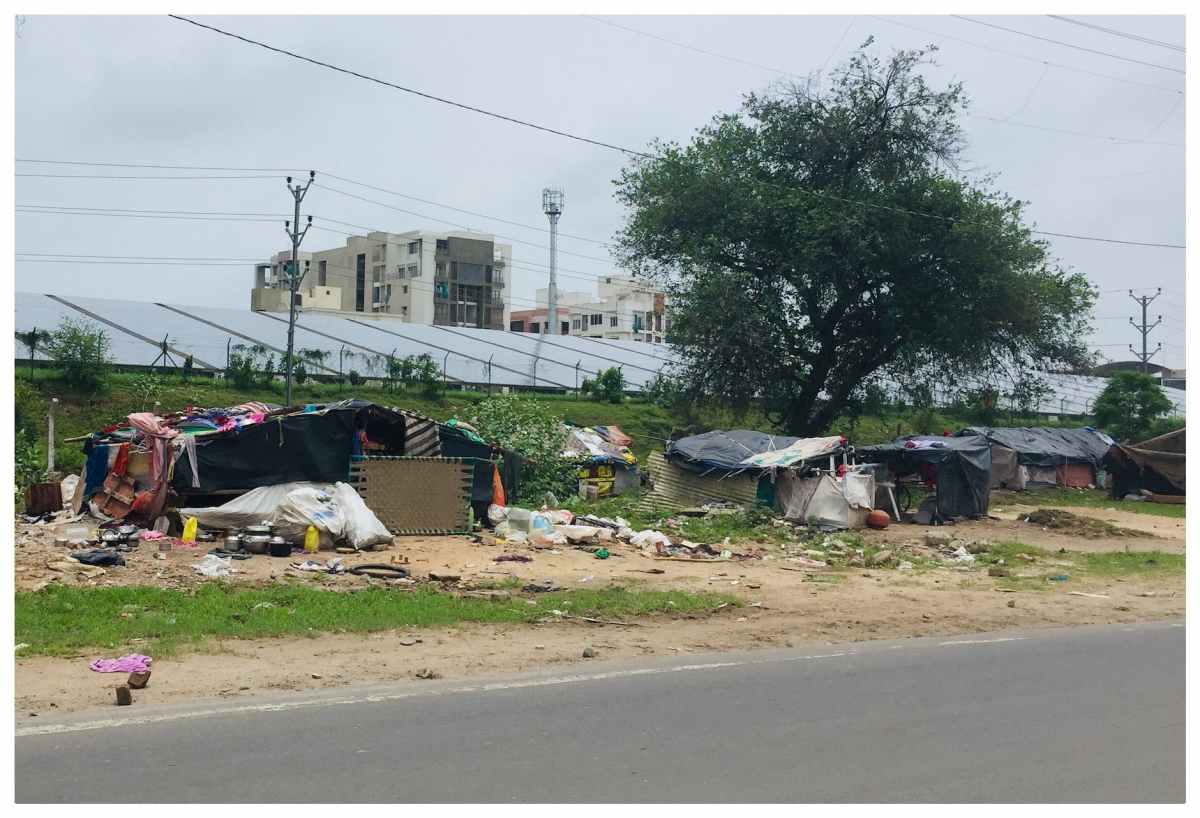“Homelessness remains a key social determinant of health, with researchers from the University of California, San Francisco, revealing that individuals who are homeless are 16X more likely to experience sudden cardiac death than those who are not.” This quote appeared in my social media feed last week, and several thoughts immediately popped in my head. First, it had been over a month since I wrote a blog and that needed to be remedied pronto. Next, this topic gave me a mandate to chew on. However, I wondered, if I had missed something in translation. Surely, this topic was not new news. Despite the significance of this new research on the intersection of sudden cardiac death and homelessness, poor outcomes related to housing insufficiency have been long-standing.
Where it Started IS STILL How it’s Going
Housing insufficiency has been among the most frequently researched SDoH, particularly in how it contributes to excessive clinical and fiscal healthcare utilization for patients. I’ve always valued this quote: “While differences in health between housed socioeconomic groups can be described as a ‘slope’, differences in health between housed and homeless people are better understood as a ‘cliff’.”
Persons who are housing insecure face considerable wholistic health challenges across the domains of physical, mental, and psychosocial health. Barriers to care are only exacerbated by the provision of care that can be suboptimal, and is often fueled by implicit bias on the part of providers. This connection leads to lack of trust by the population of practitioners and the healthcare system overall.
Global mortality rates for those who are housing insecure are far higher than other populations, and impacts every demographic. Research-driven me wanted to share a few items to ponder:
- Chronic disease burden is substantial with the general homeless population more likely to experience comorbid conditions of depression (48.1%), anxiety (45.8%) along with cardiovascular disease (18.4%) and hepatitis (18.1%).
- Patients who are housing insecure and diagnosed with cancers have poorer rates of survival compared with the general population: 38 months vs. 64 months.
- Patients who are homeless are admitted and readmitted to EDs and hospitals with greater frequency, and to the tune of higher costs. Outcomes of one healthcare program for homeless patients in Boston yielded financial outputs of $18,764 per person annually, and 2.5X more than the amount spent for the comparison Medicaid population at $7,561 per person.
- Veterans who are homeless died more frequently than those who were non-homeless: 16.3% vs. 6.1%
- Roughly 40% of the homeless population deal with unsheltered homelessness, residing on the street, abandoned buildings, or other places not suitable for human habitation. Almost 60% of these persons deal with a chronic mental health condition and hypertension (34.1%), asthma (30.9%), diabetes (9.8%), hepatitis (15.2%) and HIV (2.1%). Most live with at least 3 chronic conditions and face higher rates of illness morbidity and mortality
- Homelessness is associated with 60% higher mortality risk than poverty alone
There’s plenty data more where that came from and across every cultural nuance spanning minoritized and marginalized populations (e.g., age, ethnicity, gender, persons with physical, developmental and intellectual disabilities, race, sexual orientation, socioeconomic status, and other groups) . However, amid my profound respect for the research is a valid concern; data is meaningless without using it to activate solid solutions.
Strategic Solutioning
I posted related thoughts about this topic on LinkedIn earlier in the week. Countless colleagues and thought leaders in this space chimed in to echo similar and strong sentiments. Among the wisdom shared included:
- Active implementation and use of ICD-10-CM-Z codes: Homelessness and healthcare have been misaligned for well over my 40-year tenure in the industry. Fortunately the ICD-10-CM-Z code of Z59 for homelessness has morphed into more realistic and reimbursable codes for industry use, with many effective as of October 1, 2023. A big nod to Evelyn Gallego, the Gravity Project, Dr. Ronald Hirsch, Tiffany Ferguson, and other Z-Code warriors for their tireless energies in this space. Despite this progress, I still hear coders, utilization management specialists, and case managers push back on their use. Many are discouraged from using the codes in their organizations in deference to those that reap higher revenue capture. This is short-sighted, if not potentially fraudulent action; can we say “upcoding”? For those who need a refresher, the codes are listed below with a deeper dive available here:
- Z59.1: Inadequate housing
- Z59.10: unspecified
- Z59.11: environmental temperature
- Z59.12: utilities
- Z59.19: other inadequate housing
- Z59.81: Housing instability, housed
- Z59.811: with risk of homelessness
- Z59.812: homelessness in the past 12 months
- Z59.819: unspecified
- Z59.1: Inadequate housing
- Greater acknowledgement of and attention to all social drivers of health: For those who not privy to this information, the CMS 2023 IPPS Final Rule mandated that hospitals reporting to the Inpatient Quality Reporting program submit two measures, SDOH-1 and SDOH-2: voluntary for 2023 but required by 2024. We’re all waiting anxiously to see what the penalties for not reporting this data will be, but we can expect they’ll be significant. Joint Commission has also stepped in with standards NPSG.16.01.01 and EP 2 (Notes 1 and 2). You snooze, you lose!
- Attention to How Environmental Factors Exacerbate Social Drivers: Evelyn Gallego is the ultimate data mavin for our industry. Emphasis of environmental exposure due to homelessness and sudden death is a population health priority and public health imperative. As a fellow data-geek, I know how use of the data drives making the case to define policy and funding imperatives, so here are my favorites:
- AHRQ’s Healthcare Cost and Utilization Project (HCUP),
- County Rankings and Roadmaps
- CMS’s Mapping Medicare Disparities Tool
- The Dartmouth Atlas of Health Care
- The Satcher Health Leadership Institute’s Health Equity Tracker
- Cities Taking Action to Address Health, Equity and Climate Risks: Through the RWJF’s grant-funded project, Cities Taking Action to Address Health, Equity and Climate Change, 6 U.S. cities have been supported to respond to the interconnected challenges of health, equity and the climate crisis with innovative, community-led projects. The cities and their areas include:
- Cleveland, Ohio – the circular economy
- Detroit, Michigan – composting and waste management
- Jackson, Mississippi – mitigating heat with nature-based solutions
- Lawrence, Massachusetts – mitigating heat with walkable spaces and cool roofs
- Seattle, Washington – sea-level adaptation and anti-displacement efforts
- Tempe, Arizona – mitigating heat with Indigenous knowledge and nature-based solutions
- Enhanced Acknowledgement of the Different Types of Homelessness: There is a cultural shift as the industry is being forced to distinguish between types of housing insufficiency, such as acute and chronic homelessness across populations. Innovators working on the front lines of this challenge include Peter Badgley, Jake Rothstein, and John Gorman from Upside I Housing for Health. The National Alliance to End Homelessness continues their tireless crusade to prevent and end homelessness in the US. The National Community Action Partnership’s over 1000 state agencies take an active role in coordinating on housing advocacy and resource provision. FindHelp.org has a dedicated portal on their site for localized housing information.
- Expansion of Affordable Housing, Tax Credits, and other Housing Programs: The Center for Budget Priorities continues to advocate in this arena with a litany of recommendations for capital investments at the Federal, state, and local levels:
- Reducing the shortage of deeply affordable rental housing
- Expanding vouchers for housing
- Implementing a housing developer-focused renters’ tax credit
- Reversing restrictive local zoning practices
- Preventing the loss of existing affordable housing
- Improving the Low-Income Housing Tax Credit program
- Investing in tribal communities’ housing needs
- Removing barriers to homeownership
- Reforming project-based housing programs to encourage higher-quality housing.
Where We Need to Go
I’m just getting warmed up here, though always strive for comprehensive articles. I encourage others to add solid strategies and resources in the comments section of this blog post. Remember, we are made stronger by using the data to advocate for practical and sustainable solutions! Keep fighting the fight #SDoHWarriors.

